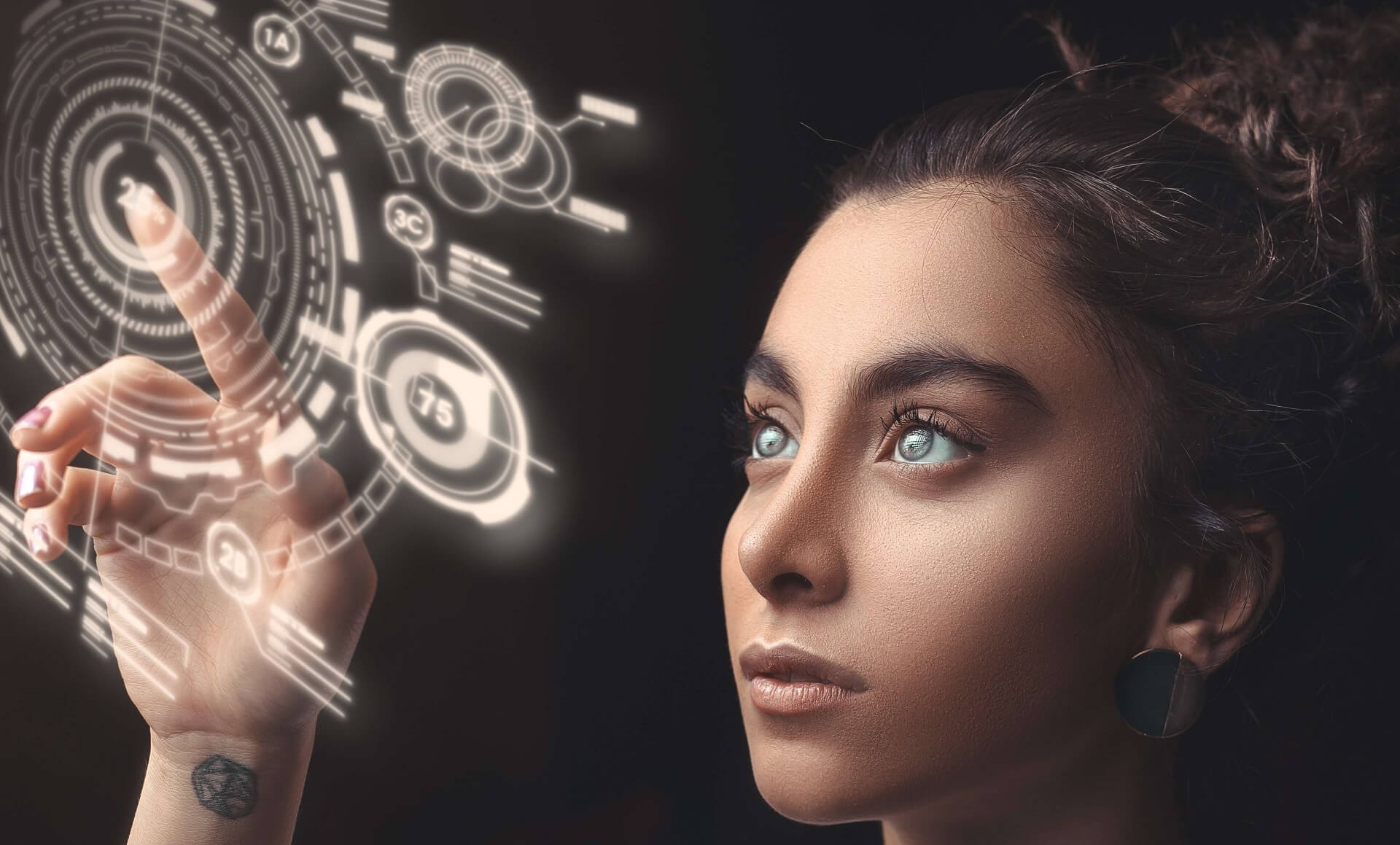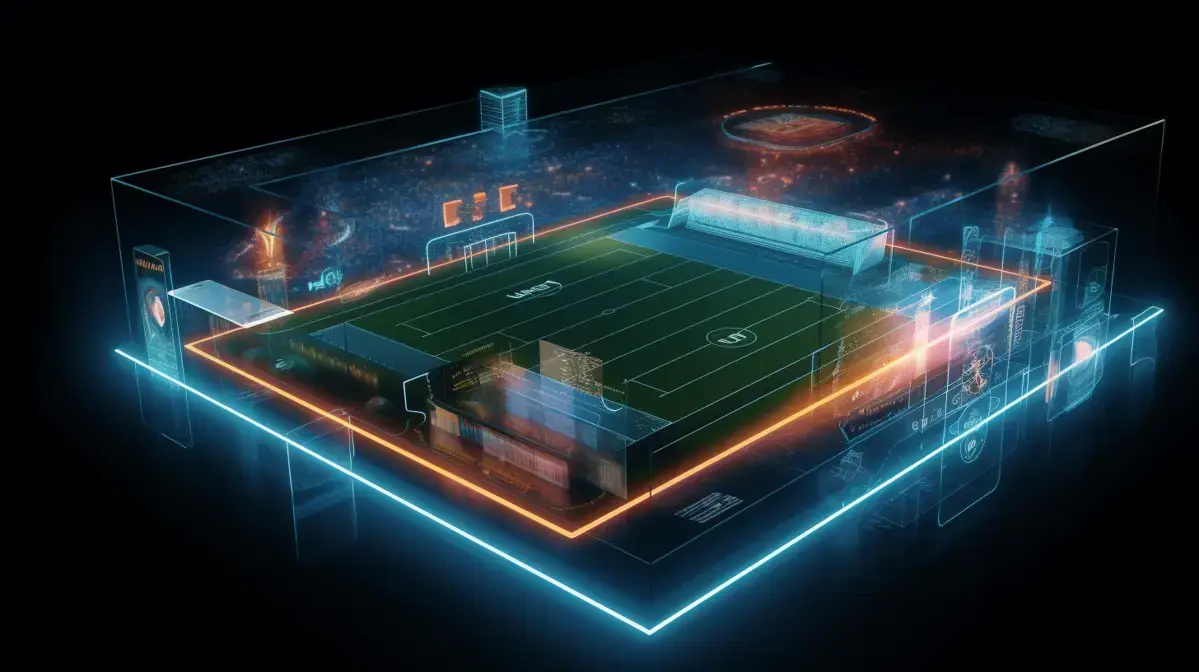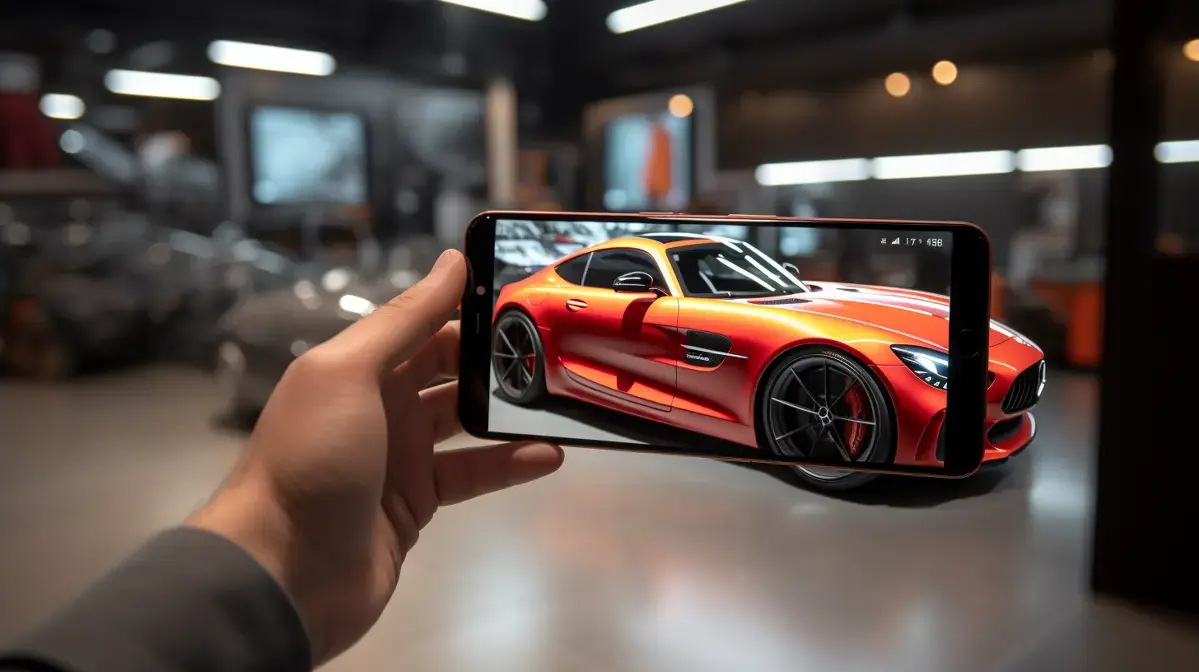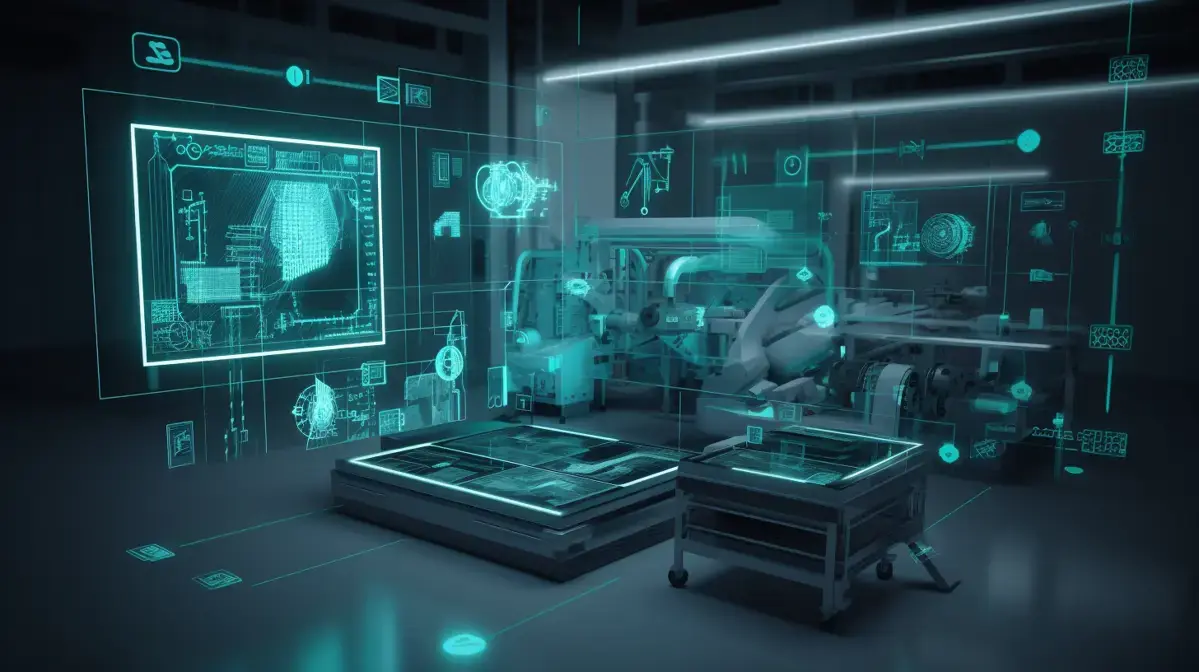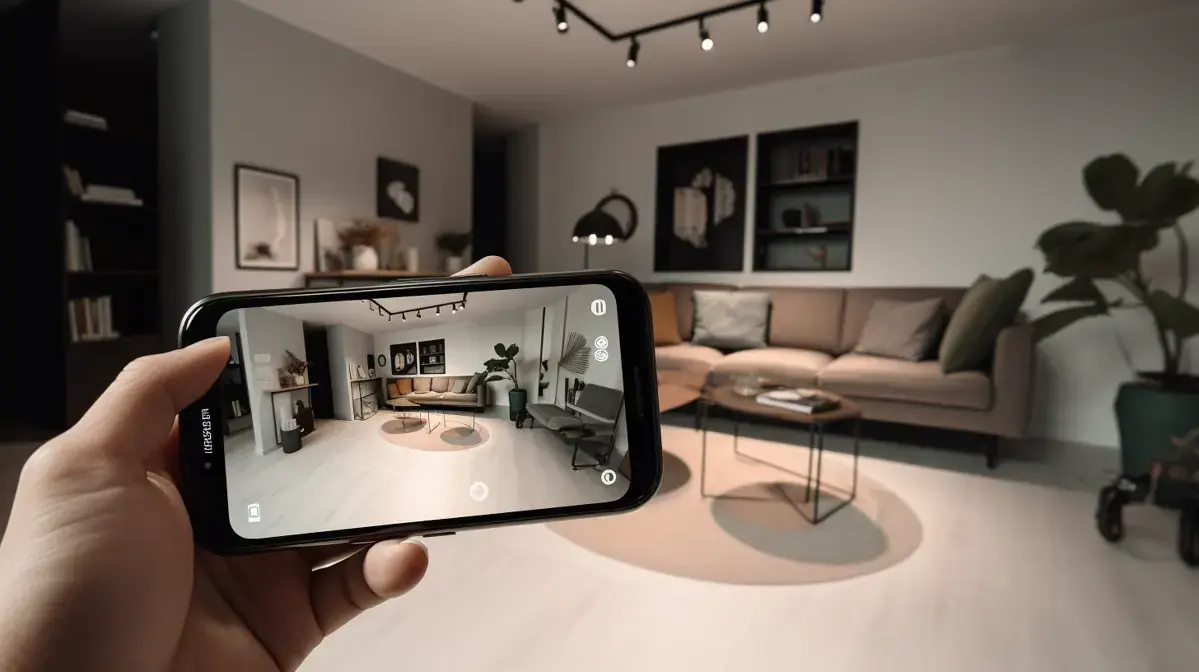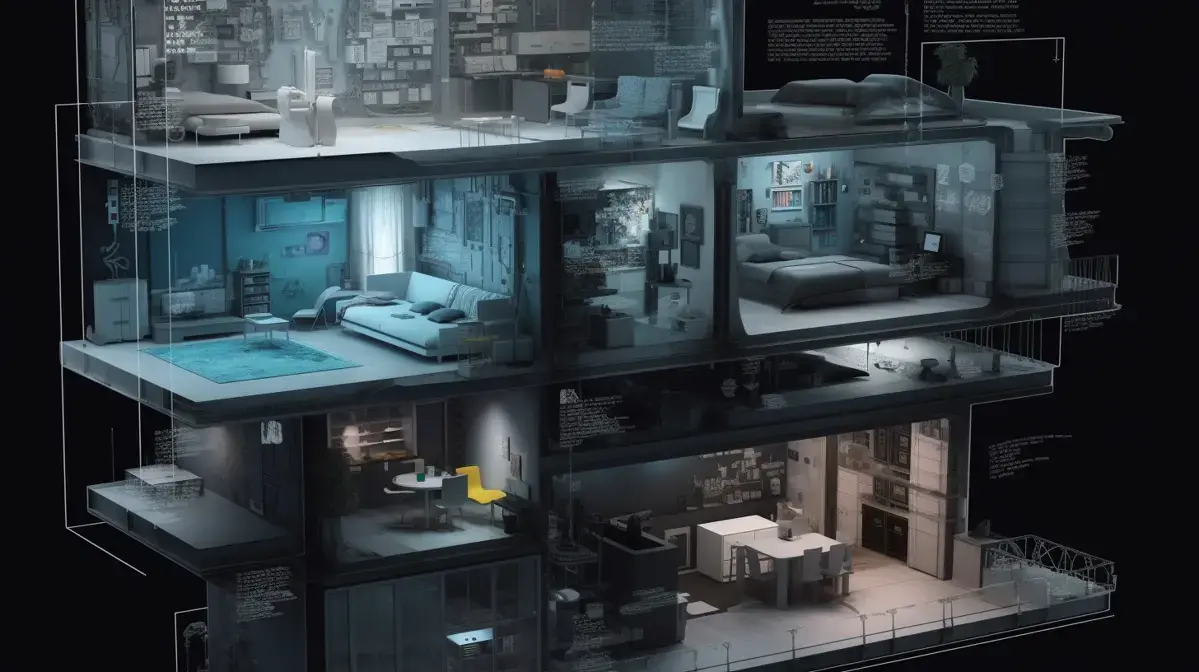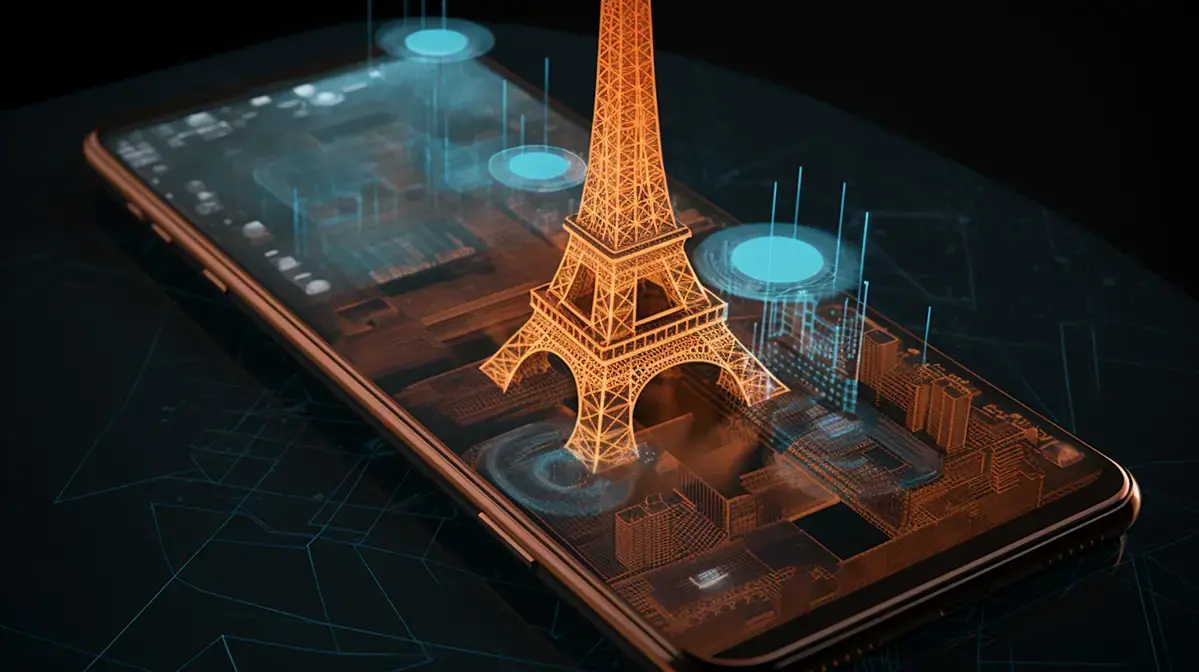Augmented reality (AR) is revolutionizing the sports retail and merchandising industry by creating an immersive experience for shoppers. With AR, customers can try on products virtually, such as shoes or clothes, without having to physically put them on.
One performant feature of AR is that it allows retailers to showcase their entire inventory in a small space. Customers no longer have to go through racks of clothing or piles of equipment since they can see everything in one place via an app or device. Retailers can also use AR to show how their products work in real-life situations; for instance, how football cleats grip the field during a game.
AR’s ability to personalize shopping experiences has also been beneficial for sports retailers and merchandisers. By using data analysis technology along with augmented reality features like virtual try-ons and personalized recommendations make it easier than ever before for customers get what they are looking forward exactly at that moment.
Moreover, brands who are early adopters of this new technology gain brand loyalty from consumers quickly due its vast arraying capabilities mentioned above – making buying decisions faster when compared against traditional methods used previously without any digital component being involved whatsoever.
To learn more about Augmented Reality please visit argeopin.com/augmented-reality/
Table Of Contents
- Key Points
- Introduction: How Augmented Reality is Revolutionizing Sports Retail and Merchandising
- The Power of Augmented Reality in Enhancing Customer Experience
- Augmented Reality Technologies for Creating Interactive Product Displays
- Interesting Facts
- Benefits of Using Augmented Reality to Showcase Products
- How Brands are Leveraging Augmented Reality for Marketing Campaigns
- Advantages of Incorporating Augmented Reality into Online Shopping Platforms
- FAQs
- The Role of Artificial Intelligence in the Future of Sports Retail Through AR
- Challenges Faced by Businesses When Implementing Augmented Reality Solutions
- What’s Next For Sports Retail And Merchandising With The Emergence Of AR Technology
- Key Takeaways

Key Points
- Augmented Reality (AR) is transforming the way sports retail and merchandising is done.
- AR technology allows customers to virtually try on products, see how they look in real life situations, and make informed purchases without leaving their homes.
- Sports teams are also using AR to enhance fan experiences at games by providing interactive content, virtual tours of stadiums, and even allowing fans to view player statistics in real-time through their smartphones or other devices.
- The use of AR has increased sales for retailers while improving customer satisfaction levels due to a more personalized shopping experience. It has also enhanced fan engagement with sports teams leading to higher brand loyalty and revenue opportunities for both parties involved.
How Augmented Reality is Revolutionizing Sports Retail and Merchandising
Augmented Reality (AR) technology is transforming the way sports retailers and merchandisers engage with their customers. For years, shoppers have walked through brick-and-mortar stores with limited information about products beyond what they can see and touch. But now, AR has bridged that gap by providing shoppers a more immersive shopping experience.
One of the primary benefits of AR in sports retail is that it brings products to life for potential buyers. A consumer can use AR-enabled mobile devices or smart glasses to view 3D models of merchandise as if they were right in front of them; this gives them an up-close look at materials, design elements and other features which would be hard to visualize otherwise.
Sports retailers are also using this technology on their online platforms by allowing customers browsing from home or anywhere else access virtual reality rooms where visitors can pick up items such as sneakers or balls virtually before purchasing anything- giving users a feel for how an item could be used within just seconds.
If you’re looking to elevate your retail game then Augmented Reality should definitely not go overlooked. By incorporating visual aids like augmented reality into sales channels – both offline & online – businesses will create memorable experiences that stick long after the purchase is made- leading too great results all around.
The Power of Augmented Reality in Enhancing Customer Experience
The impact of AR technology on sports retail and merchandising has given me a front-row seat to witnessing one of the most exciting evolutions in consumer shopping habits. With AR, consumers can have immersive experiences that go beyond just browsing products online or in-store. They can dive into a new dimension where they are no longer passive observers but active participants.
For example, imagine being able to see yourself wearing your favorite professional athlete’s jersey before making a purchase? With AR technology such as virtual try-on features now available in sports merchandise apps and websites like Fanatics or Nike by measuring your physical dimensions through mobile devices’ camera capabilities you are guaranteed that what you order will fit perfectly once it arrives at your doorstep.
In addition to this revolutionary feature for customers purchasing sportswear items using augmented reality could allow them even deeper engagement with their favourite teams including interactive 3D product views; virtual tours of stadiums from around the world; real-time game score updates via mobile notifications; player statistics tracking all from within their living room: thanks again to augmented reality.
As we progress further into this digital age with more advanced technologies soon emerging, users may find themselves engaged and excited about these future offerings as brands use cutting-edge tech solutions like Artificial Intelligence (AI) created specifically for personalization. Ultimately, merging online retailing with brick-and-mortar store operations, creating completely unified brand experiences across multiple channels where people shop, whether at home, work, on-the-go, or inside shops. As someone watching these changes unfold first hand, I am confident about how Augmented Reality is revolutionizing Sports Retail & Merchandising.
Augmented Reality Technologies for Creating Interactive Product Displays
Augmented reality (AR) is taking the world by storm, and it’s not just the gaming industry that is feeling its impact. AR technology has made great strides in revolutionizing sports retail and merchandising. This game-changing innovation allows customers to experience products virtually before making a purchase.
With AR, consumers can also interact with their favorite athletes and teams in new ways – from taking selfies with digital player images to getting insider access through exclusive content overlays. These features add excitement to sportswear purchases while creating unforgettable memories for fans.
One of my favorite examples of how augmented reality enhances customer experience comes from Adidas’ “Gameplan A” initiative that offers 360-degree product views through their app using mobile phones or tablets via QR codes found within physical stores or promotional materials online.
Augmented Reality is changing up Sports Retail as we know it – giving die-hard supporters unprecedented power over selecting products precisely as they want them.
Interesting Facts
- The global augmented reality market size is expected to reach USD 61.39 billion by 2023, with the sports industry being a major contributor to its growth.
- In the United States, more than half of all consumers are willing to use augmented reality if it helps them make purchasing decisions when shopping for sports merchandise.
- Nike was one of the first companies in the sports retail industry to adopt augmented reality technology and launched an AR app that allows customers to try on shoes virtually before making a purchase.
- A study by Accenture revealed that retailers using AR technology experienced a 20% increase in customer engagement and were able to reduce product returns by up-to-40% due to increased customer satisfaction levels after experiencing products through AR applications.

Benefits of Using Augmented Reality to Showcase Products
Augmented Reality, or AR for short, has been making waves in the world of sports retail and merchandising. This futuristic technology is changing how customers shop and interact with their favorite brands. With a simple app download, consumers can now use their smartphones to view products in 3D or try them on virtually before making a purchase.
I remember when AR was once considered as science fiction but now it’s rapidly transforming into reality right before our eyes.
One particular experience that stands out was working alongside a well-known football club during one of their pre-season tours. We created an app that allowed fans from all over the world to take photos with virtual versions of star players; it was nothing short of magical watching these supporters share these experiences on social media platforms using hashtags such as ARfanfun. Imagine being able to stand next to your favorite player without even leaving your living room?
This type of engagement is precisely why augmented reality is so revolutionary for sports retail & merchandising – by increasing fan engagement through unique experiences will inherently lead towards increasing brand loyalty which can only be good news commercially.
Overall we’re still scratching at the surface when it comes down real-life applications AR within sport both inside stadiums/courts (such as sponsorship activations) outside arenas (such as creating more interactive store fronts), but there’s no denying its potential effect on sport fans globally.
How Brands are Leveraging Augmented Reality for Marketing Campaigns
Augmented Reality (AR) technology has been transforming the sports retail and merchandising industry in significant ways. With AR, consumers can experience a new level of interaction with their favorite sports brands, allowing them to try different products virtually before buying them.
As an Augmented Reality expert, the author has firsthand experience working with several large sports retailers such as Nike and Adidas. According to him/her, AR enables stores to offer immersive experiences that traditional retail cannot match. When customers walk into the store wearing an augmented reality headset or activate a branded app on their smartphones or tablets, they can see realistic 3D product models overlaid in front of them at scale.
The potential uses for this technology are vast; it could help shoppers visualize how shoes fit while running downfield or assist fans who are trying on team jerseys inside stadium locker rooms. By giving people access to real-time feedback through digital tools like virtual mirrors and augmented reality displays within physical stores – they’re able not just see what clothes look like but also feel how it would be if worn during game-day situations.
For example: A customer walks into a sporting goods store looking for high-performance soccer cleats but is unsure which brand will best suit his needs? Using AR tech mixed with motion sensors he/she can test out these shoes by kicking around invisible balls created via projections onto walls/floors around them instantly without having physically handling any merchandise.
With Augmented Reality’s impressive capabilities across multiple platforms/devices including Google’s Tango Project tablet system & Microsoft HoloLens mixed-reality headset customers get unparalleled ability interact with products before purchasing said items which leads towards increased revenue due improved customer satisfaction rates from using these innovative techniques.
Advantages of Incorporating Augmented Reality into Online Shopping Platforms
Augmented Reality (AR) is no longer just a technology for gamers and tech enthusiasts. Its applications have expanded to various industries, including sports retail and merchandising. This innovation has dramatically changed the way consumers interact with brands, products, and even events.
Picture this: a shopper walks into a stadium store before game day looking for merchandise of their favorite team. In the past, they would have scanned through racks of shirts in different sizes until finding something that fits them or catches their eye. But now with AR integration into shopping experiences, fans can simply point their smartphone camera at any item on display to see how it looks on them or even visualize themselves in an entirely new outfit.
It gets better though – what if fans could experience being part of the action? With AR technology advancements making strides every day towards more realistic simulations; they can do just that. Fans can step right onto the field alongside athletes in 360-degree views through virtual reality headsets powered by augmented viewing capabilities- giving fans unprecedented access unlike ever before.
The possibilities are endless when combining AR technology with sports retail and merchandising – from fan engagement opportunities like interactive games during halftime shows to immersive brand experiences where customers become part owners in fantasy leagues while creating unique viral content across all social platforms using only mobile devices. Augmented Reality truly has brought about disruption, changing not only consumer habits but business practices as well.
FAQs
Q: What is augmented reality?
A: Augmented reality is a technology that superimposes computer-generated images onto the user’s view of the real world.
Q: How can augmented reality benefit sports retail and merchandising?
A: Augmented Reality allows customers to visualize products in a more realistic way, it also provides an immersive experience for them while they shop online or in-store.
Q: Can augmented reality increase sales for sports retailers?
A: Yes, by providing an interactive experience with their products, customers are more likely to purchase them. Studies have shown that companies using AR have seen significant increases in sales revenue.
Q : Are there any limitations of using AR technology?
Answer : One common limitation of AR technology is its dependency on hardware such as smartphones or devices capable of supporting this feature. This can limit accessibility for those who do not own these types of devices.

The Role of Artificial Intelligence in the Future of Sports Retail Through AR
As an Augmented Reality expert from England, there’s nothing quite like seeing the excitement on people’s faces when they experience AR technology for the first time. And when it comes to sports retail and merchandising, AR is truly revolutionary.
Gone are the days of stagnant storefront displays or online shopping pages devoid of personality. With AR technology, consumers can interact with products in a way that feels almost tangible. Imagine being able to try on a new pair of running shoes without ever leaving your living room. This level of immersion not only makes for a more exciting shopping experience but also allows customers to feel confident in their buying decisions.
But it’s not just about adding flair to product displays; augmented reality has become essential for retailers who want to stand out in an increasingly crowded market. Those who embrace this cutting-edge tech will have an advantage over their competitors by offering something unique and memorable.
One example is how Adidas utilized AR during one World Cup season: they created digital “jersey skins” that fans could activate through Snapchat filters at select locations. Customers could then customize these skins with team colors and logos before sharing them online – resulting in thousands upon thousands of shares across social media platforms. This simple yet effective campaign was game-changing because it allowed Adidas’ brand message reach far beyond traditional advertising avenues while giving consumers a fun way tp show off their love for the sport.
Overall, Augmented Reality continues to be one of most disruptive technologies available today – especially within sport retail where innovative experiences help brands communicate messages effectively whilst cementing long-term relationships between brands & customers alike.
Challenges Faced by Businesses When Implementing Augmented Reality Solutions
Augmented Reality (AR) is transforming the way sports retail and merchandising works. The technology has been around for a while, but it’s only in recent years that its true potential has been realized. By overlaying digital images onto the real world, AR can help customers visualize products like never before.
For example, imagine you’re in a sports store looking at a pair of running shoes online. With AR technology, you could hold up your phone to see how those shoes would look on your feet or even see if they match with items of clothing you already own. This kind of experience helps bridge the gap between online and offline shopping experiences as customers are able to interact with products in more immersive ways than ever before.
Sports brands have also started using AR to create unique experiences for their fans by creating interactive games or giving them exclusive access to behind-the-scenes footage through their apps or social media channels.
The impact that this technology is having on sportswear retail cannot be underestimated – according to research firm MarketsandMarkets™️ “the augmented reality market size will grow from USD 10.7 billion in 2019” indicating this trend isn’t slowing down anytime soon.
It’s no secret why so many sporting retailers are embracing this game-changing tech- it allows them not only differentiate themselves from competitors but more importantly makes shopping an enjoyable experience again where customer wants need become one thanks can come together making purchasing decisions much easier
What’s Next For Sports Retail And Merchandising With The Emergence Of AR Technology
Augmented Reality (AR) is a technique where computer-generated information is imposed on the user’s view of reality. It has already made its mark in various fields, including sports retail and merchandising. AR technology enables fans to experience events and products like never before, increasing engagement levels and driving sales.
Imagine standing at your favourite sports store with an AR application open on your phone or tablet. Suddenly, you see life-sized images of athletes running or scoring right next to you. You can visit a virtual replica of the stadium where legendary moments took place, giving you goosebumps as if it were live action happening right now.
In addition to immersing fans into unforgettable experiences that enhance their connection with their favourite sport teams’ merchandise brandings products through AR technologies such as virtual dressing rooms which allow users customize how they look while wearing team clothing.
The use cases for augmented reality within sports retail are endless – from enhancing fan engagement by offering behind-the-scenes footage or player meet-and-greets to providing real-time stats through live overlays during games themselves. This exciting new technology grants retailers unique opportunities that were previously impossible – adding interactivity & enhanced realism into any product marketing campaign seamlessly integrated across all channels be it social media campaigns online e-commerce showroom displays window shopping displays etc.
Overall Augmented Reality offers retailers an unprecedented level of customer interaction, generating strong results for both sides: increased sales figures & improved customer satisfaction rates; this truly transformative technology is revolutionizing everything about modern-day sporting merchandising.
Conclusion
The emergence of augmented reality technology has completely transformed the sports retail and merchandising industry. It has provided a unique opportunity for retailers to enhance their customer experience by allowing them to interact with products in an entirely new way. The use of AR technology provides customers with more information, enhanced visuals, and personalized shopping experiences.
With its ability to blend digital content into the physical world, augmented reality is fast becoming a go-to tool for retailers looking to take their merchandising strategies to the next level. By using this innovative technology, sports brands are creating immersive experiences that not only grab attention but also increase engagement and sales.
As we move forward, it’s clear that Augmented Reality will continue playing an essential role in shaping how businesses approach retail marketing efforts across industries – including sportswear and equipment manufacturing companies. While there may be some challenges encountered when implementing AR solutions within sporting goods stores or events venues (such as hardware requirements or technical difficulties), it’s undeniable that this game-changing tech can help brands differentiate themselves from competitors while offering consumers unparalleled shopping experiences like never before seen on traditional storefronts or ecommerce websites alike.
Key Takeaways
- Augmented reality technology is transforming the sports retail industry by creating immersive and interactive shopping experiences for customers.
- Sports retailers are using AR to offer customers a better understanding of products, such as allowing them to try on virtual shoes or see how sporting equipment will look in their home.
- The use of AR in sports merchandising allows fans to engage with their favorite teams and athletes through virtual experiences, like attending games or meeting players.
- Incorporating augmented reality into marketing strategies can increase customer engagement and sales while providing unique brand experiences that set companies apart from competitors.
